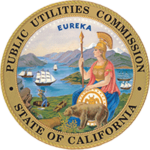 Are you up to date on California’s latest solar energy regulations?
Are you up to date on California’s latest solar energy regulations?
Since the inception of Net Metering (NEM) in 1997, the program has enabled 1.5 million customers to install more than 12,000 megawatts of renewable generation. On December 15, 2022, the California Public Utilities Commission (CPUC) voted to approve NEM 3.0, an updated policy that modernizes the NEM solar tariff to promote solar and battery storage, support grid reliability and control electricity costs for all Californians. The decision has no impact on existing rooftop solar customers, and they will maintain their current compensation rates.
“We are launching the solar and storage industry into the future so that it can support the modern grid,” said CPUC President Alice Reynolds in a press release. “The new tariff promotes solar systems and battery storage with a focus on equity and advances the new clean energy technologies we need to meet our climate goals and help ensure grid reliability.”
Under the new model, customers are financially incentivized to install battery systems so that they can store solar electricity produced during the day and export it in the evening when power demand is highest, and the grid needs it most. NEM 3.0 rewards customers for the excess electricity their system supplies to the grid based on its value, as determined by the avoided cost of the utility needing to purchase electricity from an alternative source.
NEM 3.0 complements federal incentives provided by the Inflation Reduction Act for solar and battery storage. There is an additional $630 million that the California State Legislature has allocated for residential low-income solar plus battery storage adopters.
On average, new residential customers installing solar are expected to save around $100 each month on their electricity bills. Moreover, those who choose to install solar technology along with battery storage can save at least $136 per month on average. By taking advantage of these savings, customers can fully pay off the cost of their solar systems in just nine years or less.
To support the expansion of the solar and battery storage industries, the new policy also provides extra energy bill credits to residential customers who adopt solar or solar and battery storage systems in the next five years. Customers are guaranteed these extra bill credits for nine years, ensuring predictable savings. Moreover, the new tariff promotes equity by allowing low-income customers more than double the amount of extra bill credits to improve access to solar and storage.
“NEM 3.0 is a timely reform that addresses our current grid needs,” said CalChoice Executive Director Jason Caudle. “By incentivizing solar battery storage adoption, we can avoid relying on fossil fuels, improve grid resilience and reward customers through an improved price structure.”
For more information about NEM 3.0, please review these FAQs or visit the CPUC’s website

